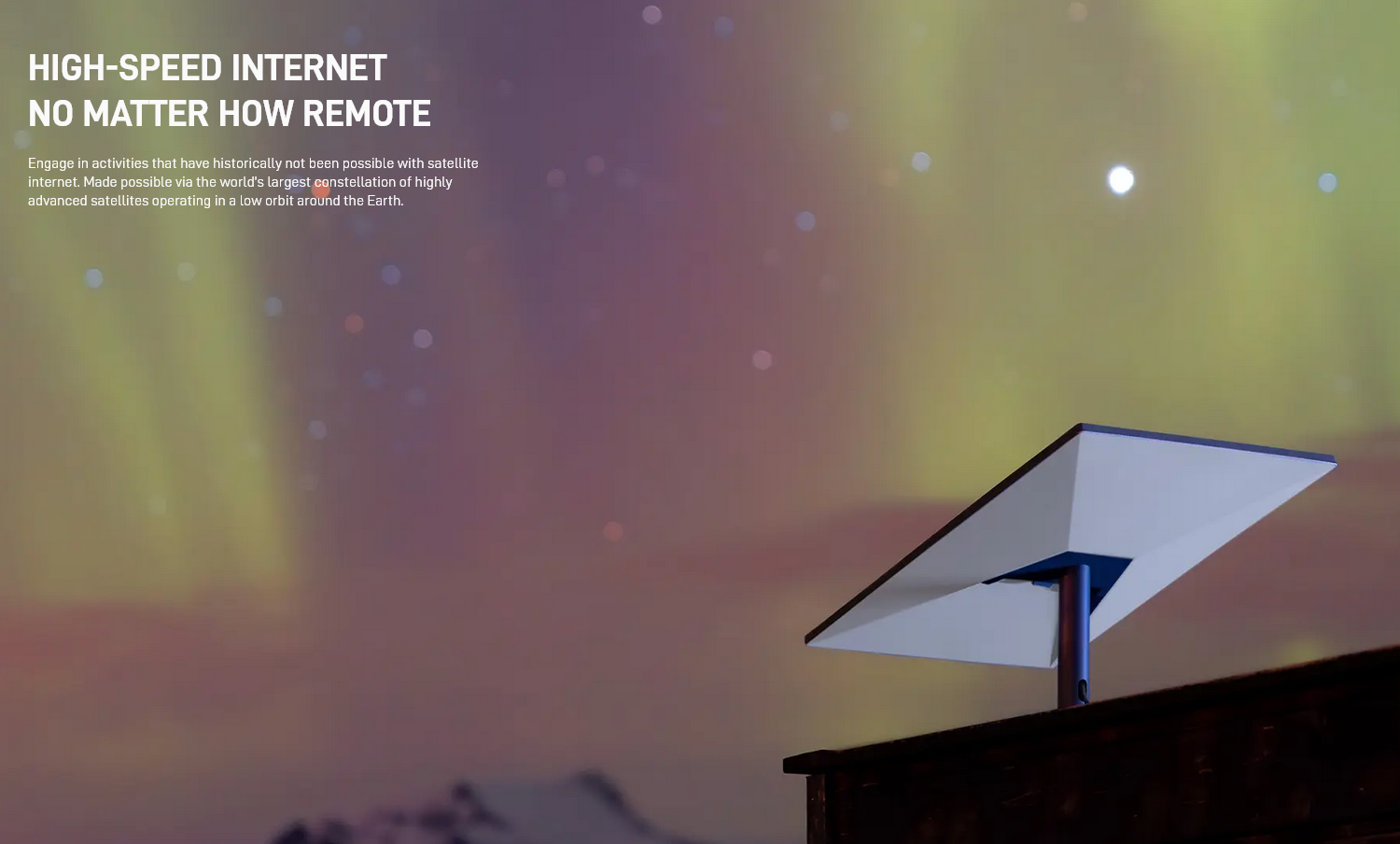
If you recall, I’ve written several times on the government’s effort to expand broadband access to everyone, especially to those living in rural areas where no cable or fiber is available. In the previous Biden administration, the program focused on providing fiber connections which requires lots of installers and technicians, stringing fiber on poles or running it underground, union labor requirements and everything you would expect that slows the process to a crawl or stops it entirely. It also makes it very expensive. Starlink, the company owned by Elon Musk, can provide broadband connectivity anywhere and no installers are necessary. You self install the equipment which takes about ten minutes and you’re on the internet at high speed. Of course, the Biden administration wouldn’t allow it. My previous articles cited the extraordinary savings possible by using Starlink instead of waiting for fiber everywhere, not to mention the speed of getting connected, but … politics.
Well, President Trump has corrected that and made the program technology neutral, so instead of specifying fiber, it now allows any competitive technology to be used, including LEO (low earth orbit) satellites.
To guarantee that American taxpayers obtain the greatest return on their broadband investment – the Benefit of the Bargain – NTIA finds that the full force of the competitive marketplace must be utilized. Therefore, all broadband technologies that meet the performance requirements of IIJA and the NOFO must be eligible to participate in the BEAD Program. Accordingly, NTIA rejects the Biden Administration’s imposition of technology preferences on Eligible Entities and instead adopts a technology neutral approach for the BEAD subgrantee selection process.
The NOFO limited priority broadband projects to those using end-to-end fiber. In doing so, the NOFO relegated other capable technologies, including terrestrial wireless and low Earth orbit (LEO) satellite services, to a third-tier status, limiting the ability of these technologies to fully participate in the NOFO subgrantee selection process and denying the taxpayer the Benefit of the Bargain via increased competition. None of these technology limitations are in statute, and they undermine the ability of Eligible Entities to select not only the most cost-effective technologies, but also those that are much quicker to deploy, and which may be better suited to a given Eligible Entity’s particular circumstances. Accordingly, NTIA hereby eliminates the “Fiber Preference” section of the NOFO34 and permits Eligible Entities to select from all qualifying technologies.

This would be a great time for our local legislators to review these changes and take action. Of course, you don’t have to wait. If you’re in the outlying areas and have no cable or fiber, you can order Starlink yourself and have broadband in no time. Waiting for the government to make this happen isn’t a winning strategy. The choice is yours.
National Telecommunications and Information Administration press release
Broadband Equity, Access, and Deployment (BEAD) Program: BEAD Restructuring Policy Notice full details
Starlink
Previous articles on North East PA Online about broadband
Discover more from North East PA Online
Subscribe to get the latest posts sent to your email.
Val Crofoot says
THISis an article you should read….
Musk could win some of $42 billion broadband pot under Trump
https://www.npr.org/2025/03/28/nx-s1-5338963/musk-starlink-broadband-commerce
TJ says
A single strand of fiber can carry more than 300 terabits per second — that’s hundreds of times more than the bandwidth of the entire radio spectrum up to 100 GHz.
This capacity advantage is not theoretical. It directly translates to better service quality for households and businesses: higher speeds, lower latency, and far fewer slowdowns during peak usage. Fiber also enables the deployment of technologies such as 5G and beyond. It is, by far, the most future-proof technology available.
Starlink is well suited for some remote areas, but their inherently low capacity in terms of users per square mile, short satellite lifespans, and the need for line-of-sight, disqualify them as a long-term, widespread solution for BEAD goals. In both third-party tests and on its own website, Starlink fails to consistently meet the 100 Mbps download and 20 Mbps upload thresholds required by the program. At $120/month, it is also one of the most expensive options on the market.
Paul Crowe says
TJ, fiber is a better option, if you have fiber running by your house. The problem, as I’ve pointed out several times on this site, is that the government keeps promising broadband connections and allocates huge amounts of money to install it and then … nothing. Lots of talk, but no broadband.
As I explained here, Pennsylvania allocated $1.5 billion for broadband for the “broadband deserts” in PA where there’s no connection available. I went through the numbers and showed how Starlink could immediately be used to serve all of the 57,000+ plus farms they were referring to, pay for all of the equipment, pay for an entire year of service and still have almost $1.4 billion left over!
In the meantime, PA was bickering over who would get it first, what the fiber installers job titles would be to determine how much to pay them, which contractors would get the contracts to run the fiber and on and on. The result? No broadband for anyone. If Starlink had been an option, everyone would have been on it in a matter of weeks or a few months, no installers needed, you install it yourself and can be online in minutes.
Satellite lifespan? Starlink is launching satellites all the time with newer and more powerful versions. There are about 8,100 satellites in orbit right now. One of the tests planned for today’s Starship is to deploy a dummy Version 3 Starlink satellite, and when the real ones are deployed, perhaps on the next Starship launch, they will have 1 Tbps of downlink capacity and 160 Gbps uplink, so any complaints about bandwidth and speed are being taken care of. Of course compared to the no broadband option that the government currently provides, anything Starlink does is infinitely superior.
Again, if you have fiber by your home, great! Hook up and enjoy. If you want Starlink, you can order today and have broadband as soon as your installation kit arrives, but if you’re one of those folks waiting for the government to bring fiber to your home, it going to be a while, a very long while.
Also, another interesting update on broadband I wrote here.